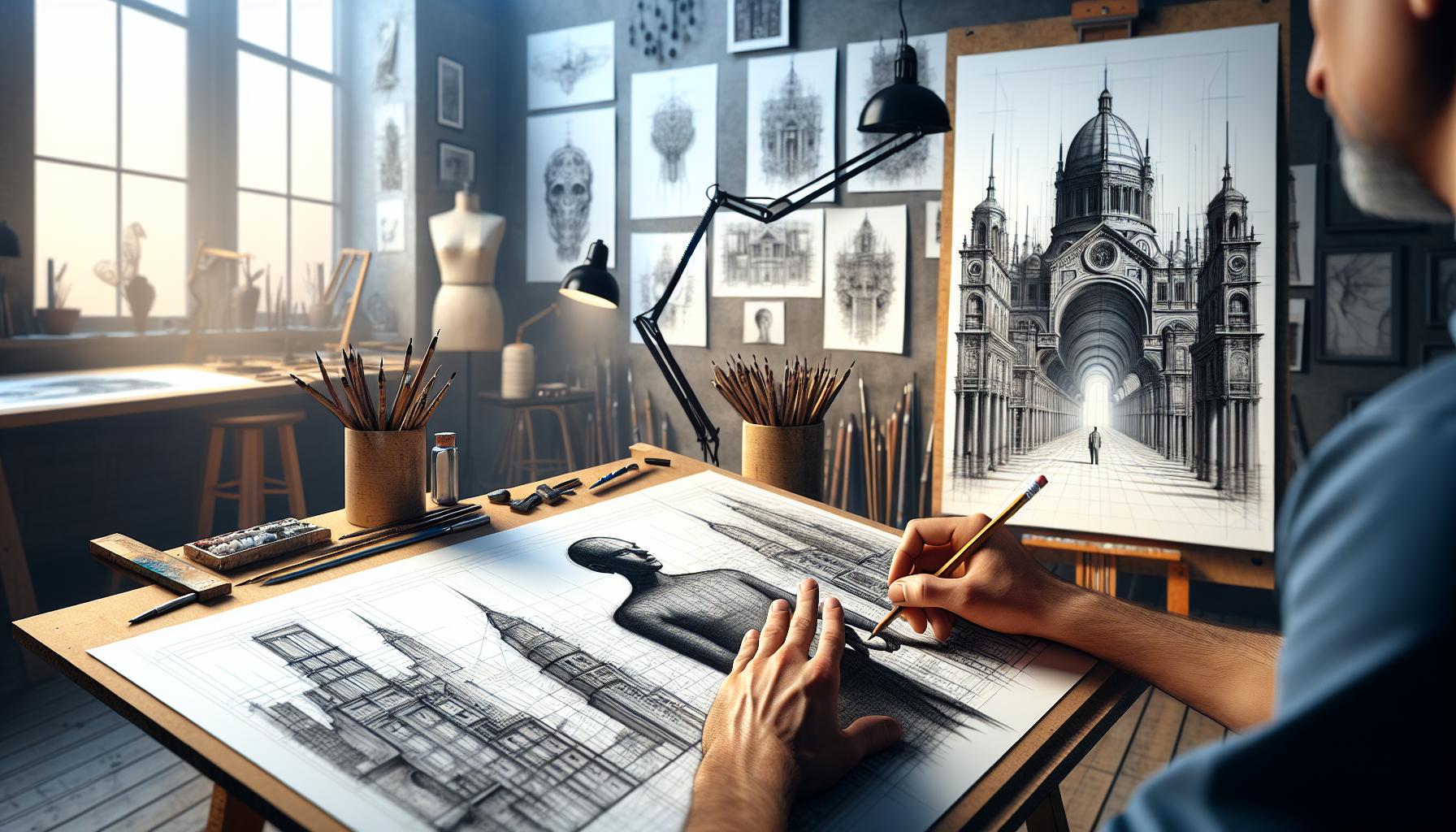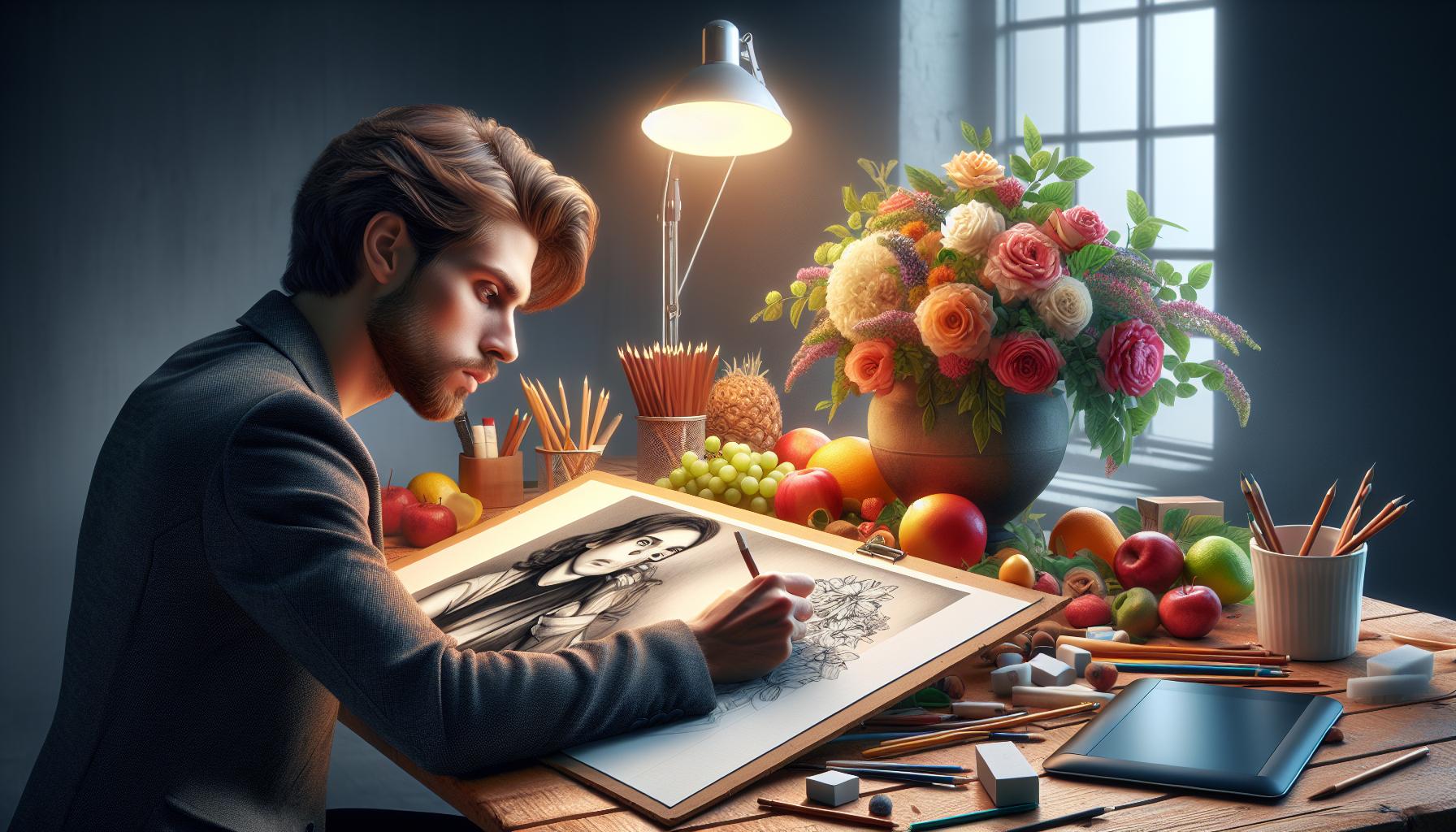Unlocking the world of artistic expression has never been more accessible with facil:bbrdqzn7k94= dibujos de, a revolutionary approach to creating stunning drawings and illustrations. This unique method combines traditional drawing techniques with modern digital tools, making it perfect for both beginners and experienced artists alike.
Whether someone’s dreaming of becoming the next Picasso or simply wants to doodle during lunch breaks, facil:bbrdqzn7k94= dibujos de offers a straightforward path to artistic success. It’s not just about putting pencil to paper – it’s about discovering a whole new way to bring imagination to life through simple, step-by-step processes that anyone can follow.
Facil:bbrdqzn7k94= Dibujos De
Easy drawing techniques form the foundation of artistic development by breaking complex subjects into manageable components through systematic approaches.
Basic Shapes and Forms
Elementary shapes create the framework for complex drawings. Artists start with circles, squares, triangles to build intricate illustrations. A human face breaks down into an oval base with circular eyes, triangular nose contours. Animals emerge from combinations of basic geometric forms – a cat’s body uses ovals for the torso, triangles for ears, circles for paws. Architecture translates into rectangles, squares, triangles to establish proper perspective. These foundational shapes connect through smooth lines, forming natural-looking contours that evolve into detailed drawings.
Essential Drawing Materials
Drawing requires specific tools for optimal results. Graphite pencils range from 9H (hardest) to 9B (softest) for varied line weights. Quality paper comes in different textures:
- Bristol board: Smooth surface for detailed work
- Sketch paper: Rougher texture for practice
- Newsprint: Economical option for quick sketches
- Drawing pad: Portable option for on-the-go artists
- Kneaded erasers for precise corrections
- Blending stumps for smooth shading
- Pencil sharpeners for maintaining tools
- Drawing compass for perfect circles
Step-by-Step Drawing Methods

Drawing mastery develops through systematic approaches that break complex subjects into manageable components. The following methods streamline the learning process for artists at any skill level.
Starting with Simple Sketches
Basic geometric shapes form the foundation of all drawings. Artists begin with circles for heads, rectangles for bodies, triangles for facial features. Creating loose guidelines with light pencil strokes enables easy adjustments. The initial sketch focuses on proportions and basic forms without detail. Professional artists map out their compositions using quick gesture drawings to capture movement and energy. This approach works effectively for subjects like:
- Draw basic shapes to establish structure
- Map proportions using reference points
- Create light construction lines
- Establish proper spacing between elements
- Add placeholder marks for key features
Building Complex Drawings
Advanced drawings emerge through layering details over initial sketches. Artists refine their work by adding subtle variations in line weight, texture shading. The process involves:
- Define major shapes with precise outlines
- Add secondary details like facial features or fur
- Create depth through strategic shading
- Incorporate texture using specialized strokes
- Refine edges for dimensional effects
- Layer multiple values for realistic shadows
- Blend transitions between light dark areas
Each stage builds upon the previous layer while maintaining proper proportions established in the initial sketch. Professional artists often work from general forms toward specific details using specialized techniques like crosshatching or stippling.
Common Drawing Mistakes to Avoid

Drawing mistakes create opportunities for improvement when identified early in the artistic process. Understanding these common errors helps artists develop stronger techniques.
Proper Proportions and Perspective
Incorrect proportions distort the visual harmony of artwork in fundamental ways. Artists maintain accurate proportions by comparing relative sizes between objects such as heads, bodies, limbs or architectural elements. A basic measuring technique involves using a pencil at arm’s length to gauge size relationships between different parts of the subject. Professional artists divide complex subjects into simple geometric shapes to establish proper scale before adding details. Linear perspective creates depth through converging lines toward vanishing points on the horizon line. One-point perspective suits front-facing scenes while two-point perspective applies to corner views of buildings or objects. Advanced artists incorporate atmospheric perspective by reducing detail contrast in distant elements.
- Keep eyes centered horizontally on faces
- Space facial features evenly within head shape
- Size heads approximately 1/8 of total body height
- Match limb lengths on opposite sides
- Align architectural elements with perspective grid
| Perspective Type | Best Used For | Key Elements |
|---|---|---|
| One-Point | Front views | Single vanishing point |
| Two-Point | Corner views | Two vanishing points |
| Three-Point | Aerial views | Three vanishing points |
Tips for Improving Your Drawing Skills

Regular practice sessions of 30 minutes enhance muscle memory for drawing techniques. Setting up a dedicated workspace with proper lighting creates an ideal environment for artistic development.
Studying reference images improves understanding of form, light, and shadow:
- Analyze professional artworks for composition techniques
- Observe real objects from multiple angles
- Photograph subjects to create personal reference libraries
- Document variations in lighting conditions
These fundamental exercises develop core skills:
- Draw continuous lines without lifting the pencil
- Sketch basic shapes in varying sizes
- Practice gesture drawing for 5-minute intervals
- Create value scales from light to dark
- Mirror existing drawings to train both hands
Advanced techniques strengthen artistic abilities:
- Cross-hatching for texture variety
- Blending methods using different tools
- Negative space drawing exercises
- Perspective studies using grid systems
- Anatomical sketching from life models
Digital tools complement traditional methods:
- Use digital brushes to experiment with styles
- Record drawing processes for review
- Access online tutorials for specific techniques
- Join virtual drawing communities
Measurement techniques ensure accurate proportions:
| Method | Purpose | Application |
|---|---|---|
| Sight-sizing | Scale comparison | Still life drawing |
| Grid system | Position accuracy | Portrait layouts |
| Triangulation | Angle precision | Figure drawing |
| Unit division | Space distribution | Composition planning |
- Document daily sketches in portfolios
- Set specific skill-building goals
- Track improvement with dated works
- Participate in drawing challenges
Digital vs Traditional Drawing Methods
Digital drawing tools transform traditional art processes through innovative features like layers multiple undos pressure sensitivity. Artists create artwork directly on tablets computers using specialized software such as Procreate Photoshop Clip Studio Paint.
Traditional methods maintain tactile control through physical materials:
- Graphite pencils produce varied line weights textures
- Paper surfaces offer unique texture interactions
- Charcoal creates rich dark values dramatic effects
- Erasers enable precise corrections subtractive techniques
Digital advantages include:
- Infinite color palettes instant mixing options
- Multiple layers for complex compositions
- Quick corrections without material waste
- Built-in perspective grids symmetry tools
- Easy file sharing collaboration options
| Feature | Digital | Traditional |
|---|---|---|
| Initial Cost | $400-$2000 | $50-$200 |
| Ongoing Costs | Software subscriptions | Art supplies |
| Portability | One device | Multiple materials |
| Learning Curve | 3-6 months | 1-3 months |
Hybrid approaches combine both methods:
- Scanning traditional sketches for digital coloring
- Printing digital layouts for traditional rendering
- Using digital references for traditional execution
- Incorporating traditional textures into digital work
Each method offers distinct creative possibilities based on artistic goals technical requirements project demands. Digital tools excel in commercial professional settings while traditional methods provide irreplaceable hands-on experience artistic development.
The facil:bbrdqzn7k94= dibujos de method stands as a revolutionary approach that bridges traditional artistry with modern innovation. This versatile system empowers artists at every skill level to create compelling artwork through structured learning and practical application.
By combining time-tested drawing fundamentals with contemporary digital tools artists can now explore their creativity more freely than ever before. The fusion of traditional and digital techniques opens endless possibilities for artistic expression while maintaining the essential principles of good design.
The journey to mastery through this method proves that anyone can develop their artistic abilities with dedication practice and the right guidance. As technology continues to evolve this innovative approach will undoubtedly shape the future of artistic education and creative expression.



